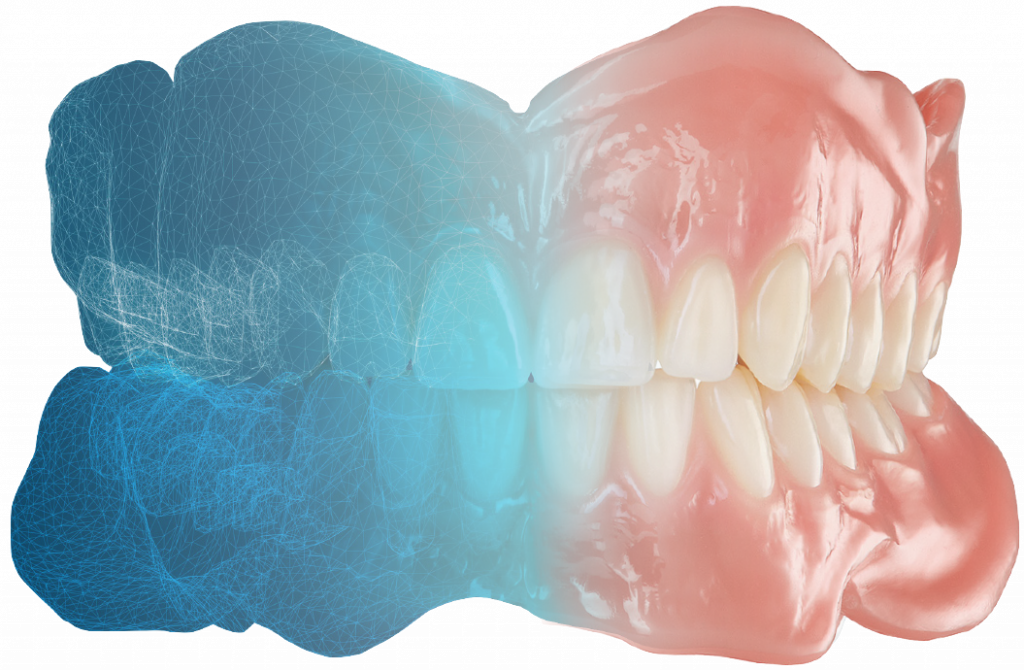
Today’s Digital Denture
“Everything is going digital” seems to be the quote of the decade. Digital technologies in dentistry have come to be known for their streamlined workflows, accuracy, time savings, and sense of automation in the overall process. The goal of technology is to continue improving to make things faster, easier, and cheaper, which results in natural automation. More important, the timeline of improvement is faster than most can keep up. Digital denture technology is no different; and while there is not yet a magic wand amongst the various systems available to create a digital denture without human input, a certain level of automation in digital dentures can now be realized through a system’s simplicity, versatility, and predictability. Sterngold Digital Solutions has partnered with Merz Dental to offer the Baltic Denture System (BDS) to provide the technician and clinician the ability to create a premium milled, digital denture, in a way that is simpler, more predictable, and versatile than any other digital denture product in the market.
The advent and development of digital dentures over
the last 10 years has revolutionized the way technicians, clinicians, and
patients view and approach the subject of complete dentures. The fact is it is
still evolving rapidly. What started out as teeth being bonded into precise
positions in a milled base has evolved into more sophisticated attempts to
create quality final prostheses, some much better than others. The same holds
true with the software used to design digital dentures. Design software has
become increasingly advanced via open source or proprietary digital design
packages, each requiring varying levels of expertise to master. Even the
equipment used to create a digital denture, including scanners, milling
machines, and 3D printers and accompanying materials are improving faster than
customers can realize a true ROI on their investment. Finally, the “digital
denture workflow” is becoming codified as more and more systems are learning to
take advantage of the common benefits of embracing digital.
So, what’s the next evolution? What
separates all the players?
It comes down to a straightforward question: What do technicians and clinicians want and expect in a digital denture system?
The answers are clear. Whether laboratory technician or clinician, if you are going into the digital world fresh, you want a system that is simple, straightforward and user friendly. A system that is versatile in allowing you to easily bridge the gap from conventional to digital. Equally important, you must have predictability and a final quality digital prosthesis that adds value to your reputation and gives you the confidence that you are providing the best product and care for the patient or customer. And most important, you can reach your digital goals in an affordable manner. The Baltic Denture System® (BDS) was created specifically to address these expectations.
Keeping it Simple AND Complete
Driven by its own proprietary open-system, BD Creator® Plus software (Fig. 2), engineers based BDS in well-established and documented clinical philosophies. Also important was to easily assimilate conventional setup ideals to digital. This is seamlessly accomplished with the help of the software’s “Design Wizard”, where the designer is easily and logically guided through well laid out, concise work steps, to ensure that each digital design results in a clinically correct proposal ready for manufacture. Beginning with the scanning (Fig. 3) and data import, .STL record files of the final impressions and interocclusal records are registered. (Fig. 4) This reference will be visible for clinical landmark identification and tooth setting. Intuitively, a model analysis is performed with the arch forms. Clinical landmarks are chosen to identify the force bearing areas of the ridge and establish stable alignment of the arches. (Fig. 5) BD Creator® Plus proceeds to identify the correct clinical path of insertion and appropriate block out areas. (Fig. 6) Full control is given to the designer to define the denture’s peripheral borders as clinically required including the ability to reproduce the contours of a fully border-molded impression. (Fig. 7) Automatically, the record bases are created (Fig. 8) and based on the previous model analysis and landmarks, a proposed tooth arrangement is set. (Fig. 9) The Merz PolyStar® Selection Edition teeth are positioned for maximum stability and chewing efficiency. Finally, the fully contoured and esthetic bases are generated ready for export and milling. (Fig. 10) This creates a one-step milled final denture which requires minimal finishing time. The level of automation and intuitiveness of the BD Creator® Plus software is clearly manifest in its simplicity, ease of use, and quick learning curve. The entire design process can be done in about 10 minutes which brings a new level of efficiency and productivity to your denture department.

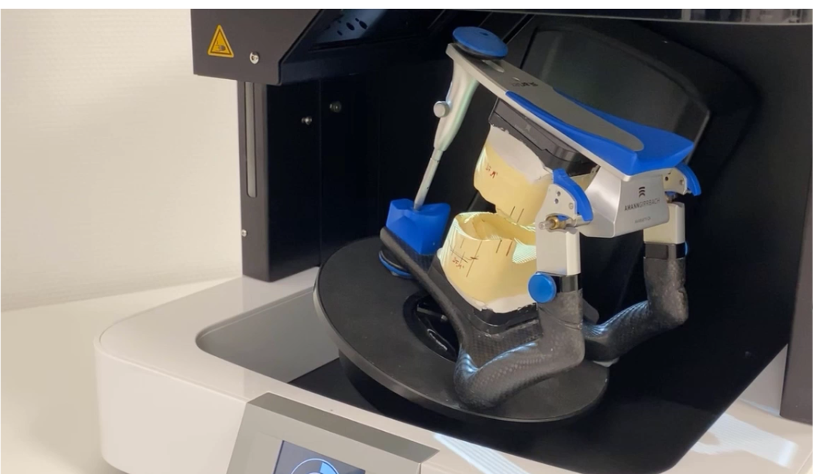
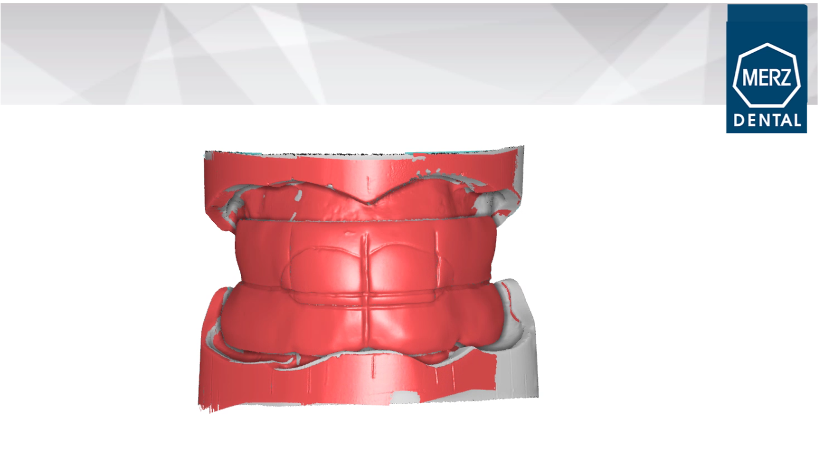

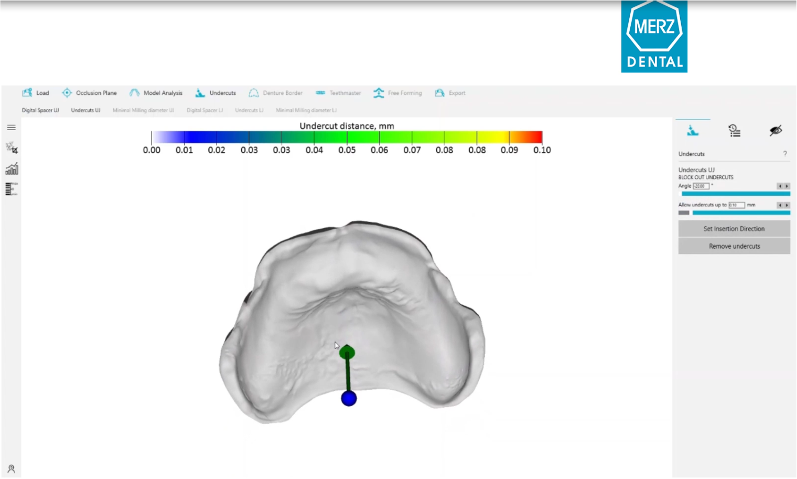
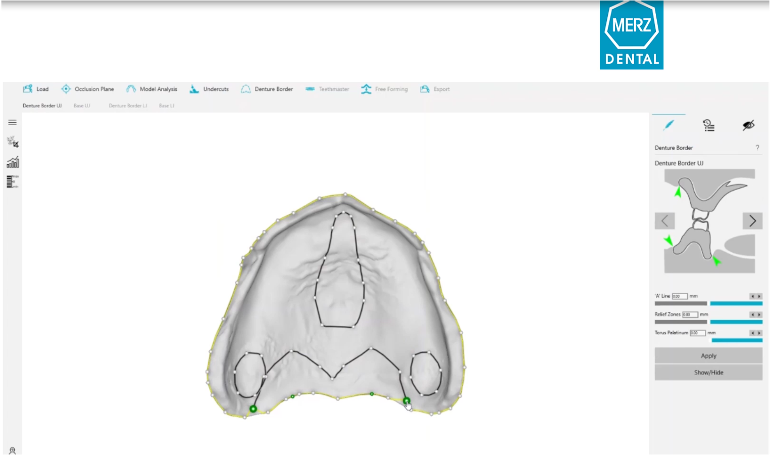
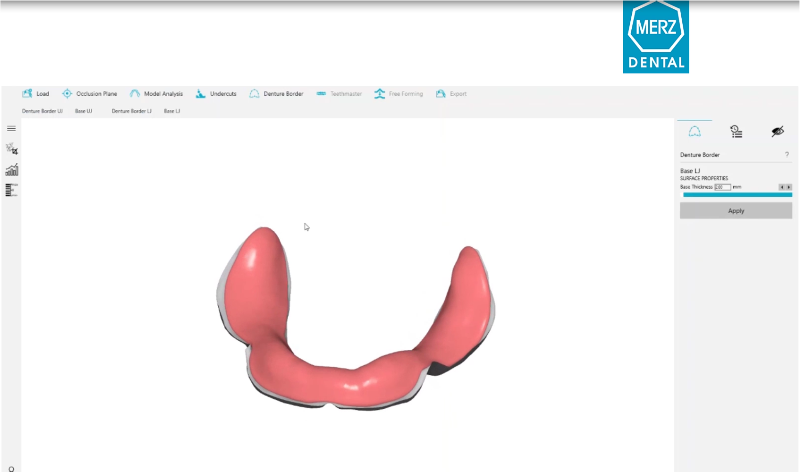
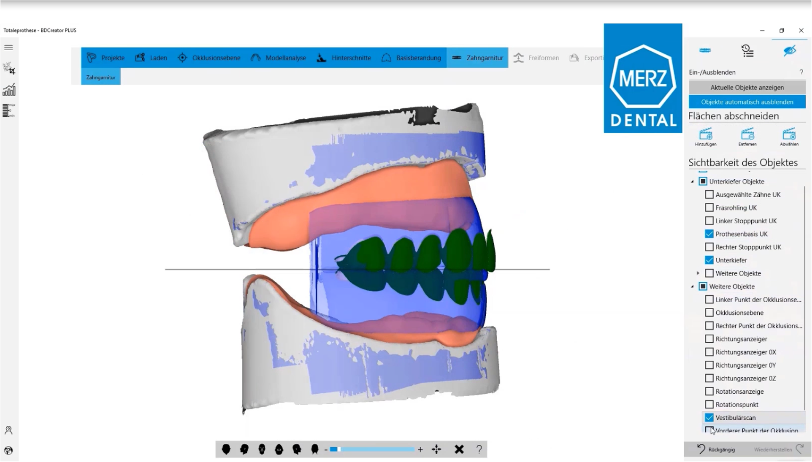
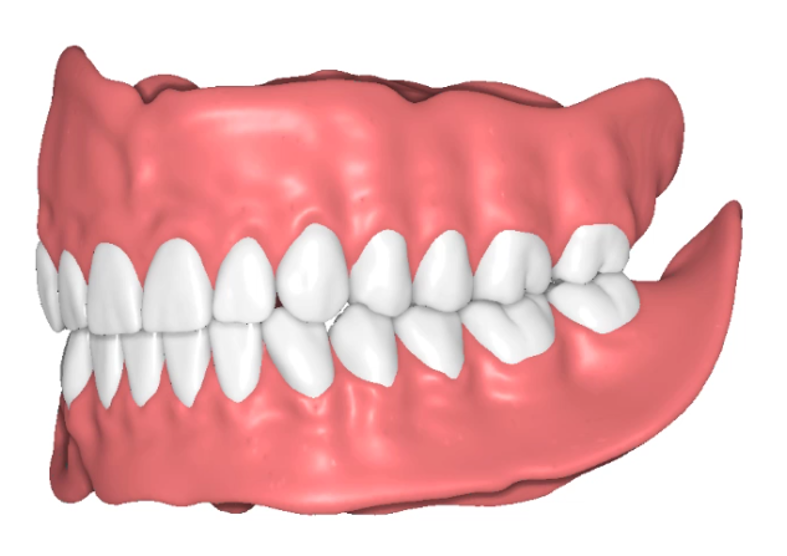
Confident Predictability
Certainly, a common major factor in the hesitancy to adopt a new digital technology, especially digital dentures, is not doing something new for fear it does not fit within one’s comfort zone. Denture technicians and clinicians are creatures of habit when it comes to dentures. We want things to be predictable; we know what works. BDS distinctly provides a sense of automation through confidence that the product will meet and exceed expectations. Digital dentures are dependent on accurate centric records, final impressions, and clinical (chairside) esthetic information from the clinician. The ability to achieve a two-appointment digital denture with BDS is entirely achievable. Provided the clinician has accurately defined the correct esthetic information including midline, incisal edge, lip support, tooth size, gingival height, and horizontal plane of occlusion, in whichever record choice was provided, successful delivery is predictable and most likely assured. (Fig. 11) BDS and the BD Creator® Plus software’s sophisticated yet simple design process allows for the full input of this data and success becomes a matter of communication of information. This combined with the proven reliability of Merz Dental tooth molds and BD Load® denture base materials provide an ideal opportunity for success.
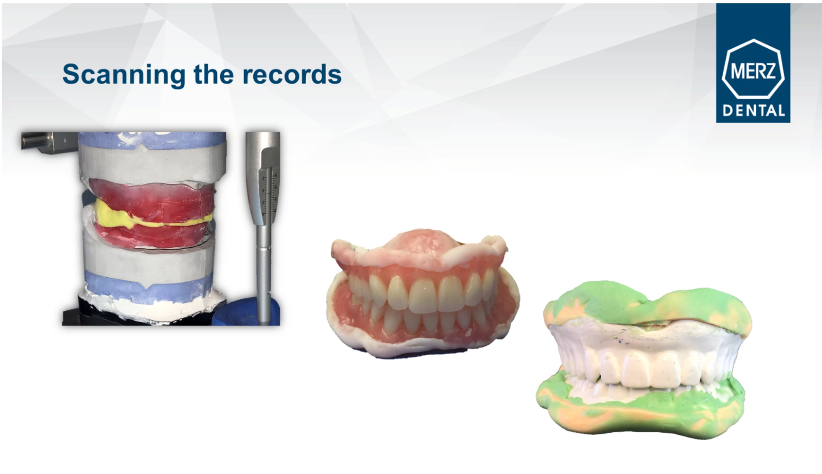
A mandatory requirement of predictability is the quality of the final prosthesis. The material’s overall esthetics and material properties are paramount. Prices of finished dentures in general run the spectrum from less sophisticated methods to high quality processing techniques, materials, and customization. This is also true with digital dentures. There is a wide array of materials and techniques being used and developed which are improving daily. Pricing for these digital systems varies greatly, as does the overall quality and esthetics. Many who have the high standard of providing premium final dentures have made premium investments with the hope of providing the same level of satisfaction in a premium digital denture. Unfortunately, due to the ongoing development and improvement of dental materials and their physical properties, several digital denture systems, although very promising, do not qualify for the status of premium digital denture. Factors including overall esthetics, strength, wearability, longevity in the mouth, and bio-hygienic characteristics, among other things, must be taken into consideration when attempting to provide a premium final product. While most techniques will eventually achieve this status, as of today, arguably the milled digital denture made from known high quality materials without the bonding of teeth is the best option. BDS offers a milled digital denture made from highly cross-linked, hi-impact, minimal residual monomer, PMMA base material and fully integrated, highly esthetic, lifelike, multi-layered, highly crosslinked, and abrasion-resistant OMP-N® teeth. The advanced process of integrating the teeth into the base material chemically results in a PMMA interface which constitutes a monolithic structure which does not entertain the idea of delamination, it is one material, there is no risk of “pop-outs”. (Fig. 12,13) The ability to deliver a quality product naturally creates confidence and predictability with your customer. Understanding this and by strict definition, BDS provides the opportunity to confidently offer your customer or patient the highest quality premium digital denture.
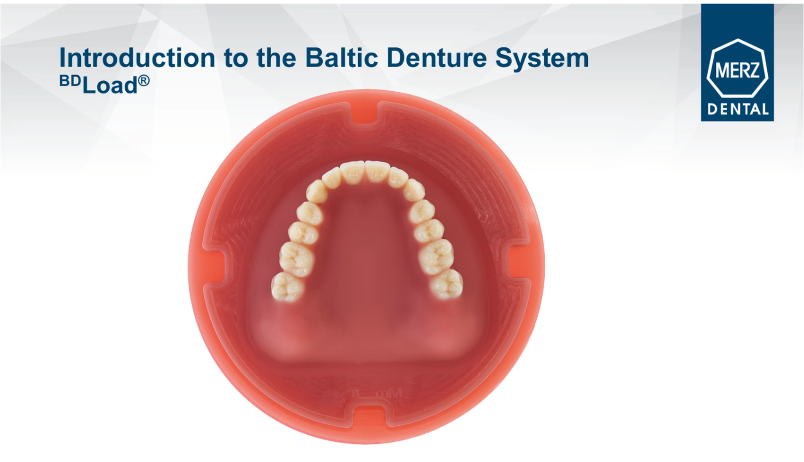
It Must Be Versatile
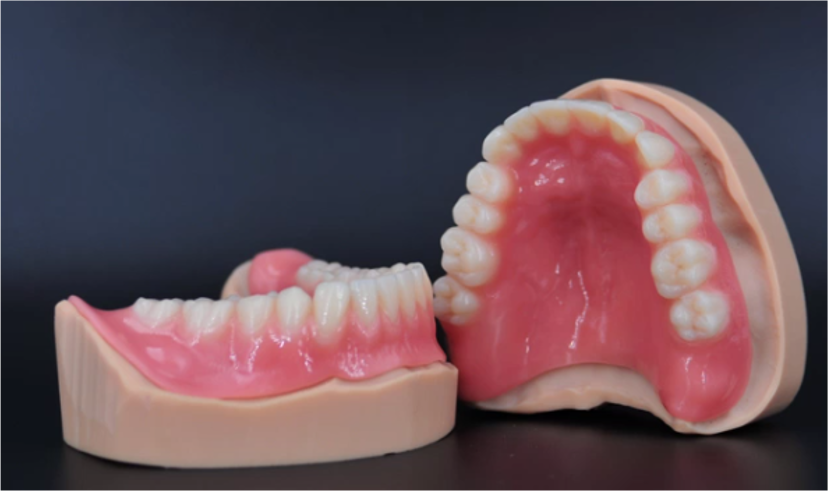
Another key consideration when evaluating a digital denture system is the ability to easily integrate what you currently do and offer digitally. BDS provides the ability to produce an array of digital denture products and advanced features within the BD Creator® Plus software. It also allows one to “jump in” at any entry point of the design or manufacturing process, you can do as little or as much as you want within the BDS workflow. It also allows you to pursue several equipment options if you choose to do the entire process yourself or already use the equipment necessary to create a BDS digital denture.
Within BD Creator® Plus, you have the flexibility to create full-over-full (Fig. 14), single arch (Fig. 15) and immediate complete digital dentures . When creating a single arch digital denture BD Creator® Plus has the advanced features of setting the occlusion inside the fully integrated Amann Girrbach Artex® CR virtual articulator (Fig. 16) and milling dynamic adjustments into the occlusion against the opposing arch. (Fig. 17) Another advanced feature is the ability to digitally extract teeth when creating immediate complete dentures with ability to perform digital alveoloplasty (Fig. 18) to the ridges where more room is needed. You can subsequently use these files to create a bone reduction guide which can be 3D printed from the .STL file. While one of its goals is to provide the opportunity of a two-appointment denture, BD Creator® Plus walks you through the fabrication of a try-in at the customer’s request. A distinct advantage within BD Creator® Plus is the ability to create digital pockets for overdentures in coordination with the many overdenture attachments provided by Sterngold including ERA, Stern Snap, O-ball, ORA, and Locator®. (Fig. 19)
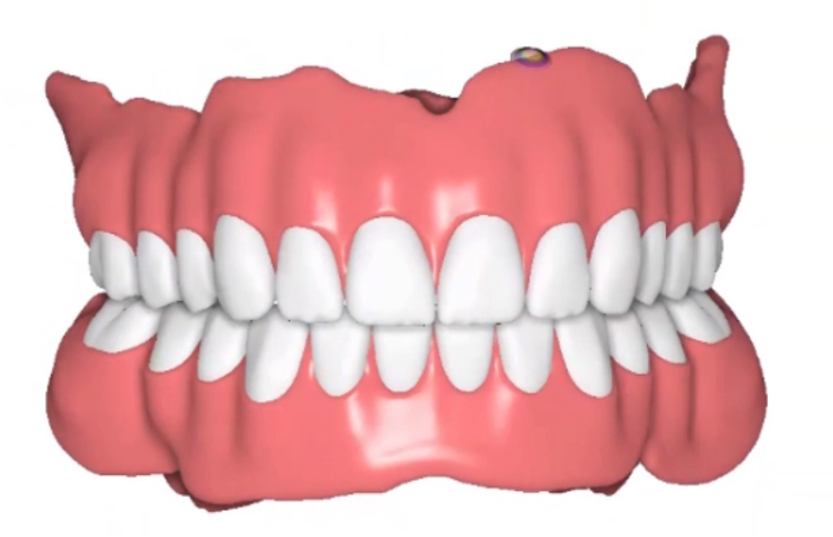
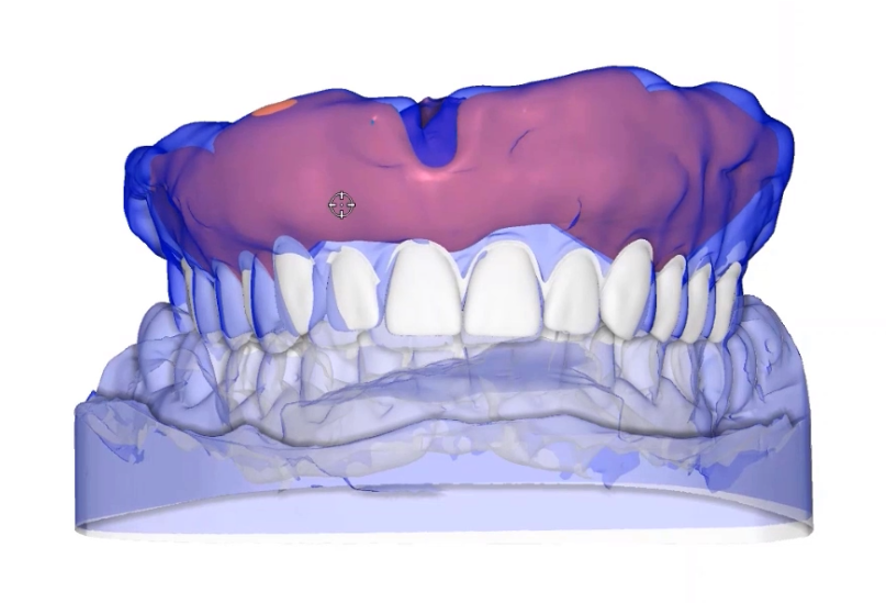
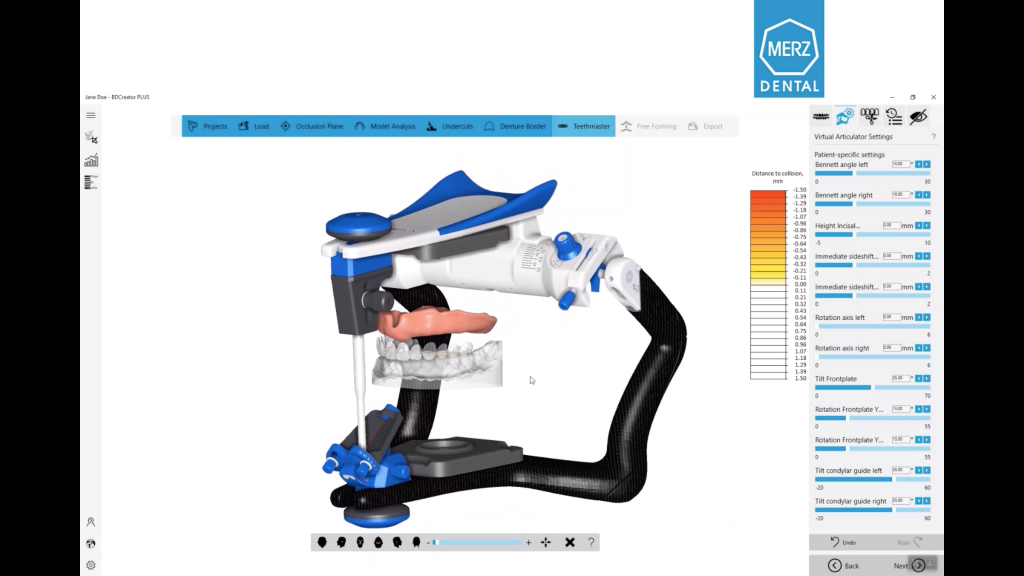
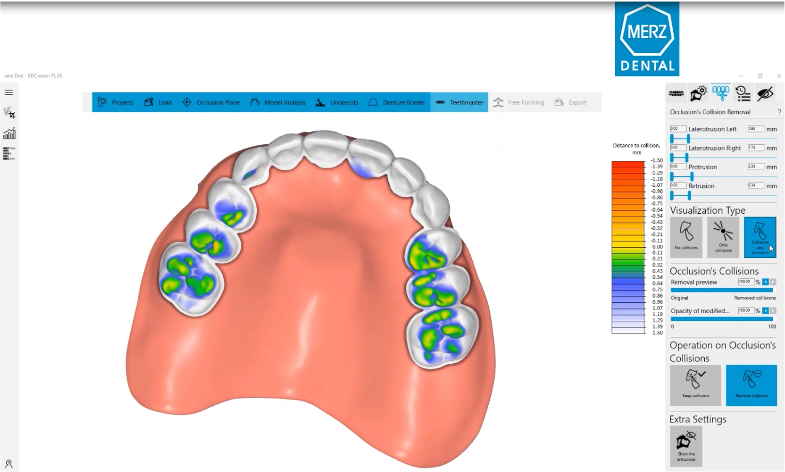
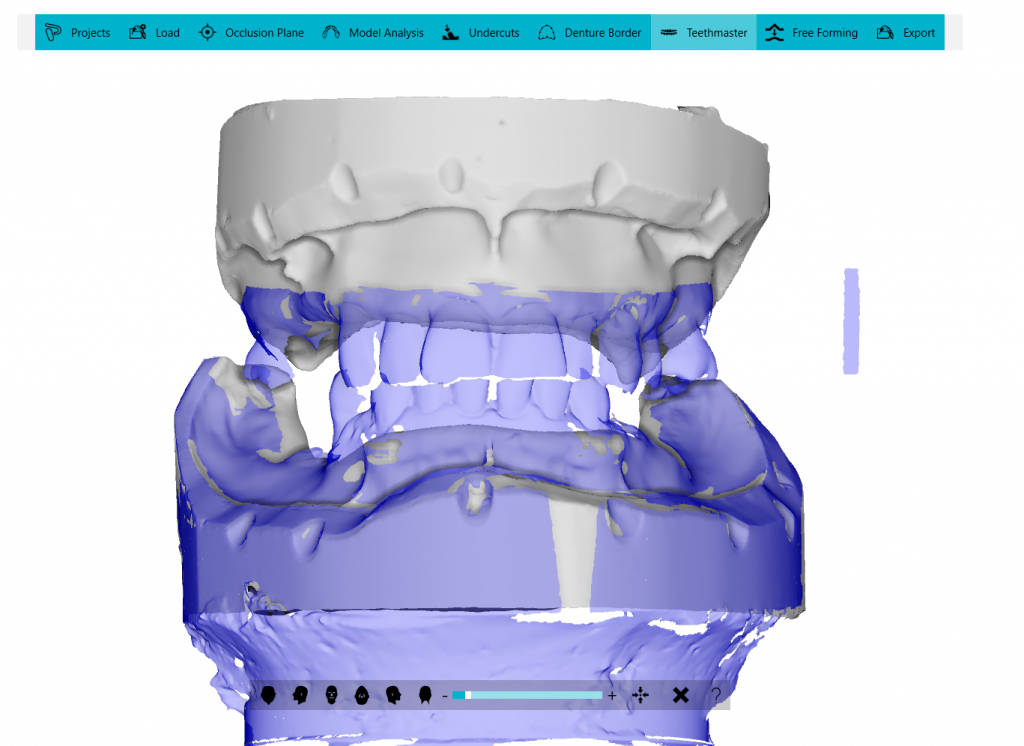
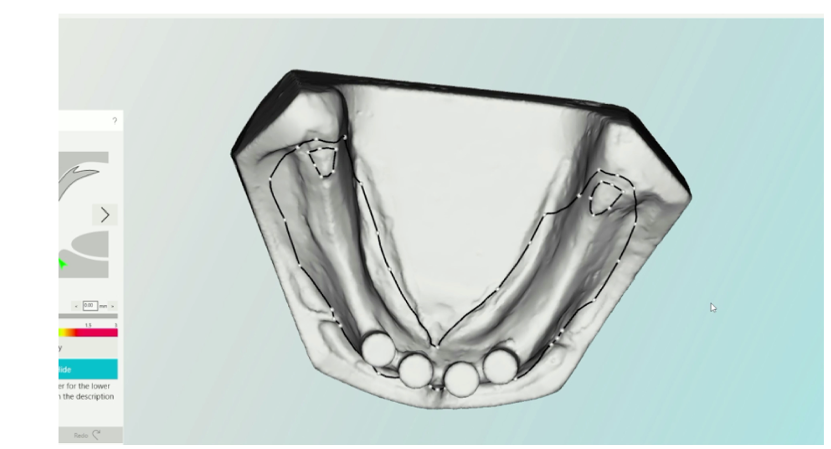
Determining how much or how little you want to do in the digital denture process is an important business decision. BDS in coordination with Sterngold, offers the ability to have as much control or do as little as possible. From submitting models to Sterngold, to providing the finished case and everything in between. Options include the purchase of BD Creator® Plus to have full control over the digital design process or allow the purchase of scanning and milling equipment. The flexible, tiered entry level options are for your benefit.
Regarding the ease of “jumping in” to the digital denture workflow, once you have decided to create a digital denture, BD Creator® Plus provides the ability to accept any form of denture record set. To create a digital denture, the minimum required records include accurate final impressions (antagonist if creating a single arch) and an accurate centric relation record. This may be provided in many forms. Just as discussed with predictability, BDS will accept your current record techniques and use them to create a BDS digital denture. It may be an existing denture with a bite and wash impression, a duplicate denture with the same, a wax rim and final impressions or full wax-up (tried-in) with bite. Digital scan files created in the lab or clinic can also be easily used. Remember, it’s communication of the correct information which is vital to the success of a BDS digital denture. BDS provides an advanced option of using the BDKey® record system of creating an accurate interocclusal record. (Fig. 20) During the initial appointment, function, esthetics, and centric relation can be verified and wash impressions made in the BDKey® trays. They are then are submitted for scanning. BD Creator® Plus also gives you the ability to create custom impression trays from impressions received as well as bite blocks to be sent to the clinician.
Depending on which tier you decide to enter there are several options regarding scanning and milling equipment. BDS has the flexibility of incorporating any current scanning equipment with the ability to produce a quality .STL file. Since BDS is a premium milled digital denture milled from a BDLoad®, the current supported milling systems include the Imus Icor 250i and 250i, Amann Girrbach Ceramil Motion 2, and the MB Cobra Mill 48. Scanners and milling system purchases are coordinated through Sterngold.
A Fresh Look
It is an exciting time in the world of denture creation and the digital denture revolution is here and evolving fast. If the financial and professional decision is made to produce a premium digital denture with ease and efficiency to maximize your productivity and profitability, then the best alternative must be BDS. It is automation redefined and it exists within its simplicity, predictability, versatility and of course… affordability.
About the Author:
Gene Peterson, CDT, is Sterngold’s Director of Technical Development and Learning. Gene has an extensive and diverse background in the dental industry, covering R&D, clinical and dental laboratory workflows and protocols, production, and facility management. After owning and operating a dental laboratory for 18 years, he spent 9 years with a major digital denture & technology company before joining Sterngold. Gene has been heavily involved in the review, testing, and use of various digital denture systems in his capacity as a certified dental technician, dental lab owner, clinical research head, and currently as the driver of growth for Sterngold’s digital solutions and is considered an expert in the subject. As a subject matter expert, he has co-written research and white papers on digital dentures and other technical subjects.
